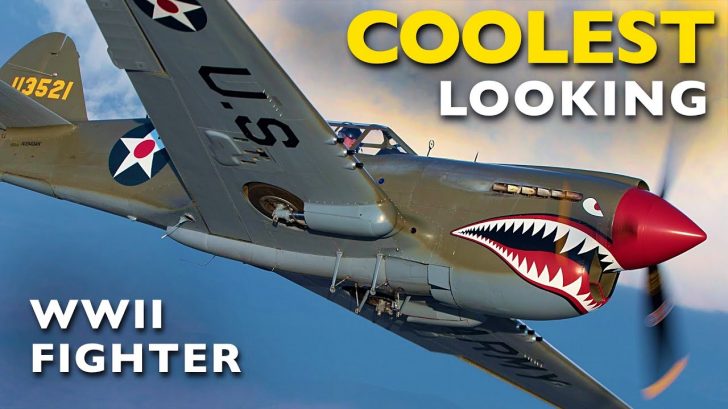The Specifications
Developed from the P-36 Hawk, the Curtiss P-40 Warhawk saw improvements through its use of an inline V-12 Allison engine and improved armament of two .50-cal and four 30-cal machine guns. This would later be upgraded to six .50-cal machine guns with the introduction of the P-40E model.
However, the P-40’s streamlined shape wasn’t able to accommodate the new engine well. The old-fashioned supercharger design forced its engine performance to drop off quickly above 12,000 feet, making the Warhawk almost useless as a fighter above 15,000 feet. For context, the Spitfires in the European theater usually operated at heights around 30,000 ft.
Rejected by the British
Early P-40 models did not have a two-speed supercharger, limiting their high-altitude performance. Because of this, Britain decided to forego the P-40s in Europe, but they did use it in the North African campaign, where it was the British’s main fighter.
In addition, the P-40 also saw extensive use in the Pacific theater. It was as fast as the Japanese Zero but could also out-dive and out-turn it at speeds above 275 mph. And even though the Zero had better climb rates and low-speed turning, the P-40’s far more rugged design was superior as it could take much more punishment than the Japanese fighters.
Impressive Kill Ratio
The combat record of the American Volunteer Group in Burma and China speaks for itself. In total, the group had a kill ratio of 40:1 while battling an enemy with superior resources and numbers.
The Flying Tigers had a total of 297 confirmed kills, 160 in the air and 137 on the ground, while only losing four pilots in combat, two in bombing raids, and nine in accidents.
Even the China Air Task Force, which took over the AVG’s role, posted an impressive kill ratio. Equipped with the newer P-40E models, the task force recorded 149 kills, 86 probables, and 16 combat losses while being outnumbered three-to-one by the Japanese troops.



